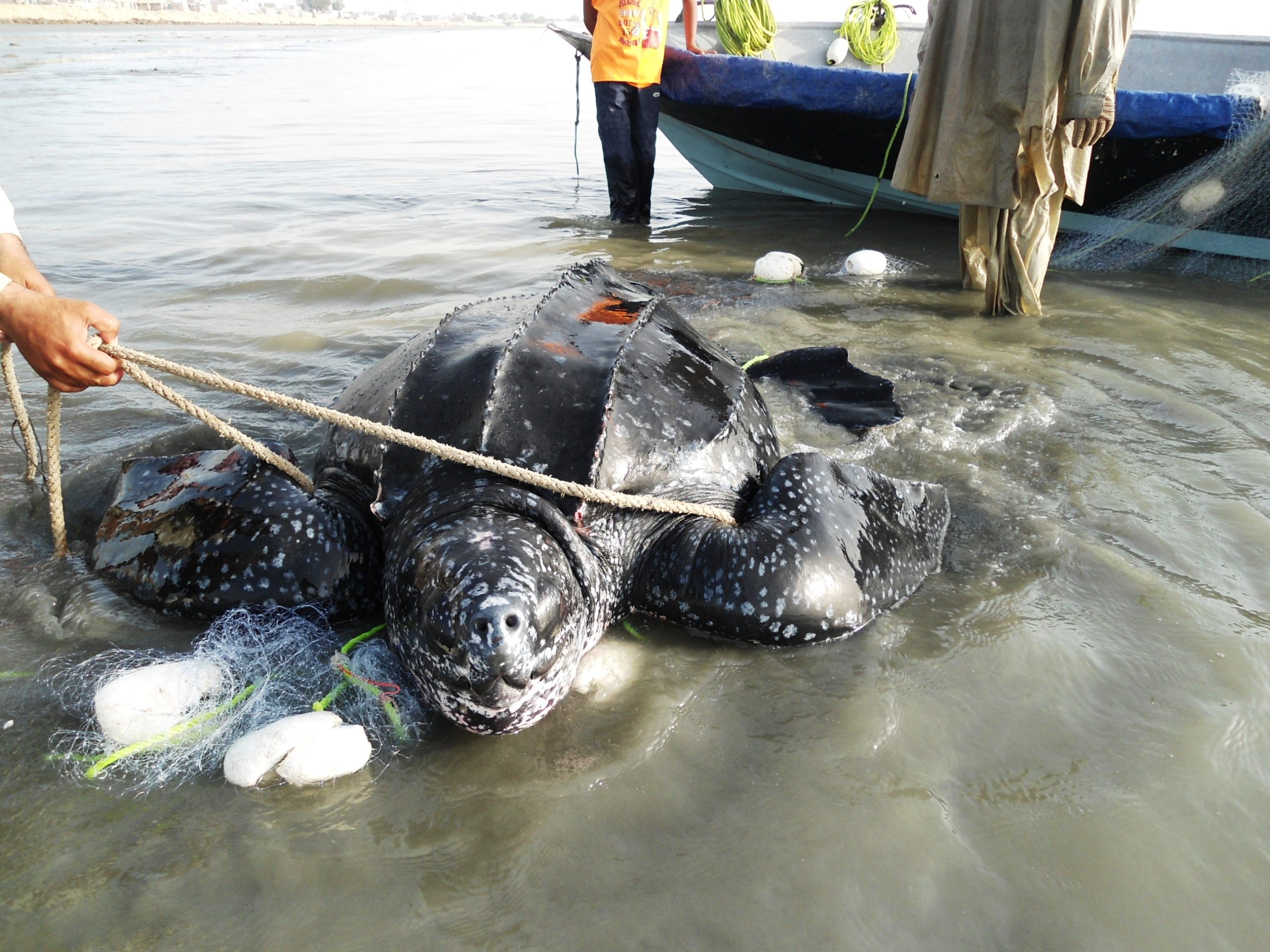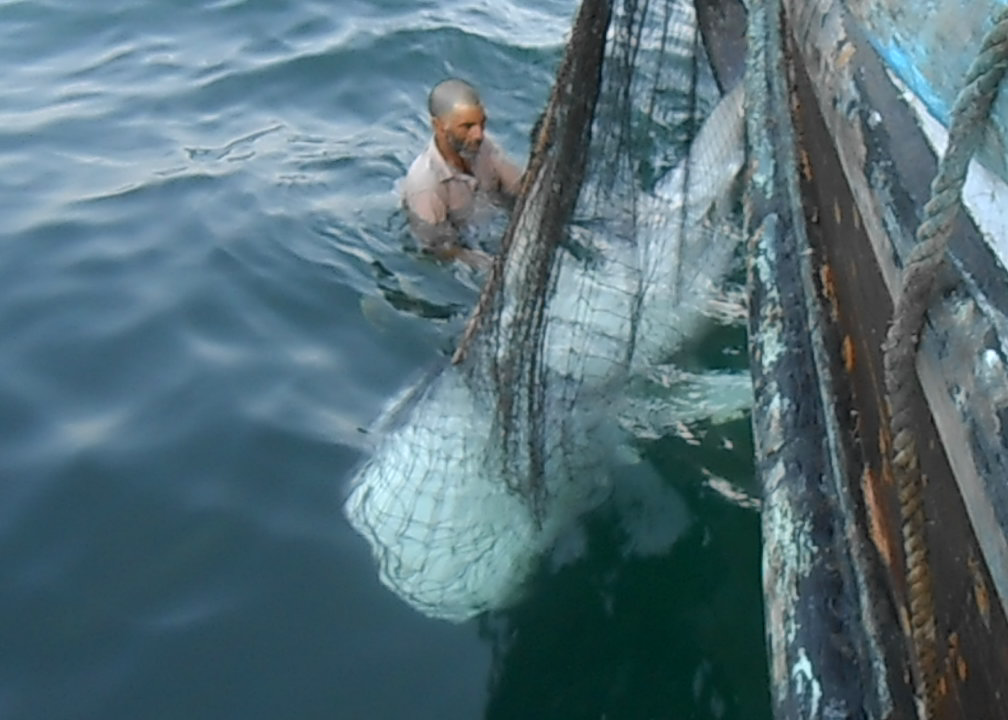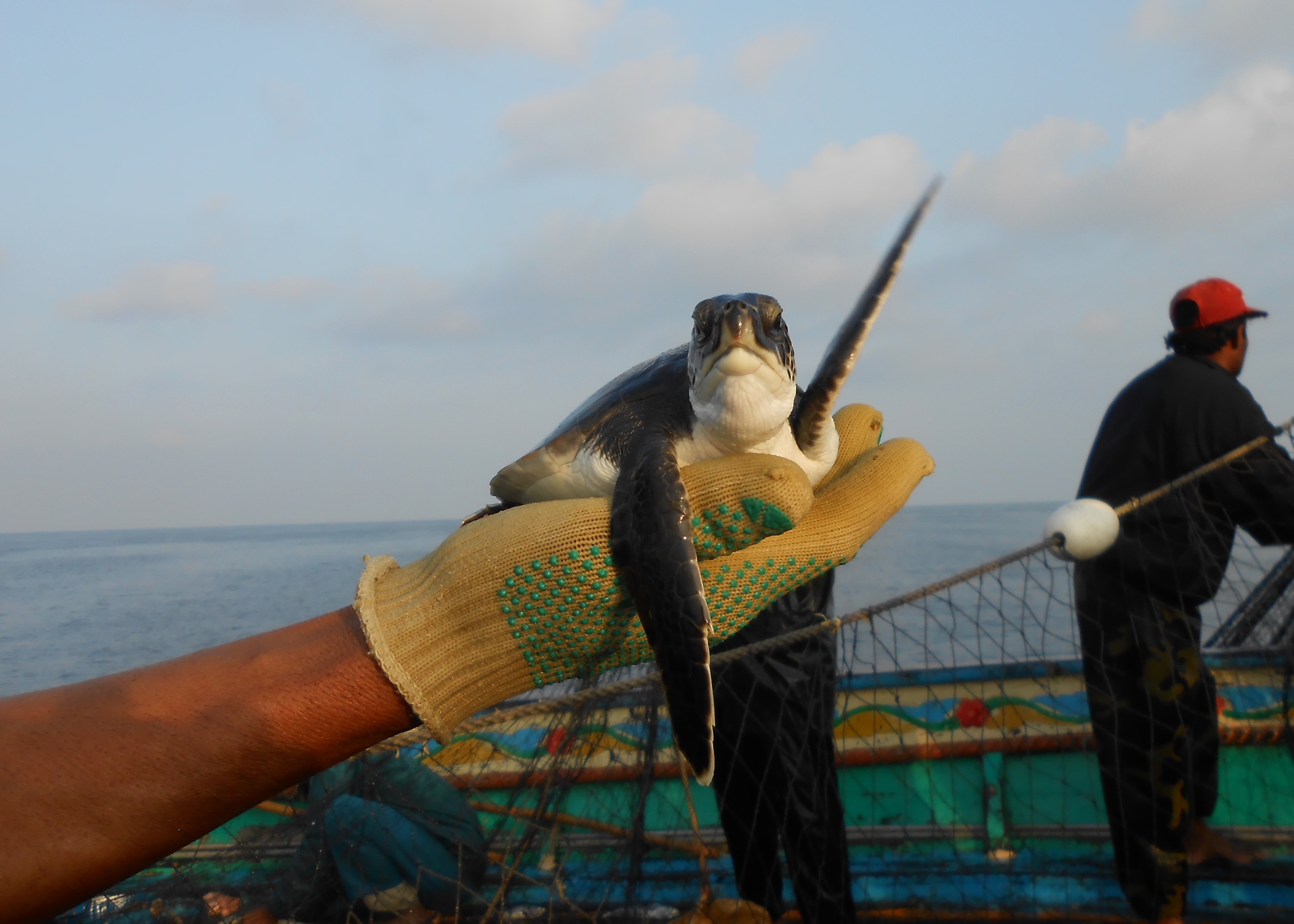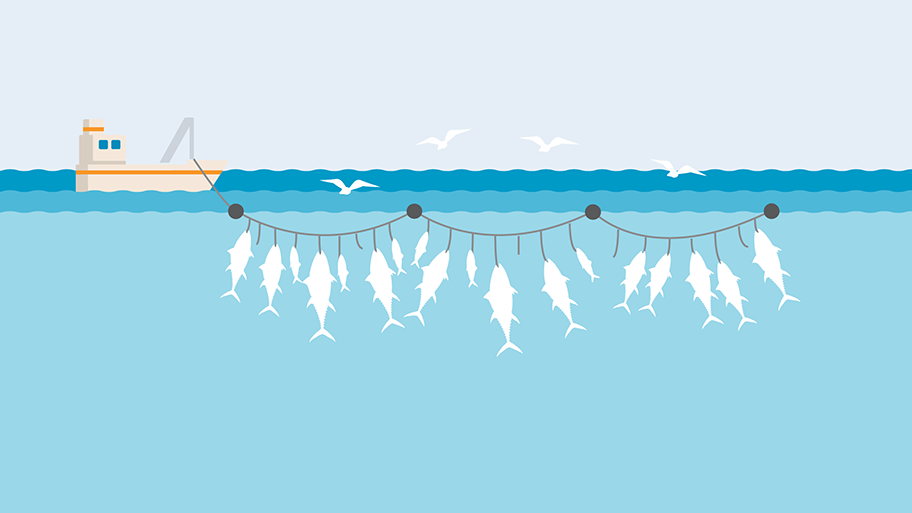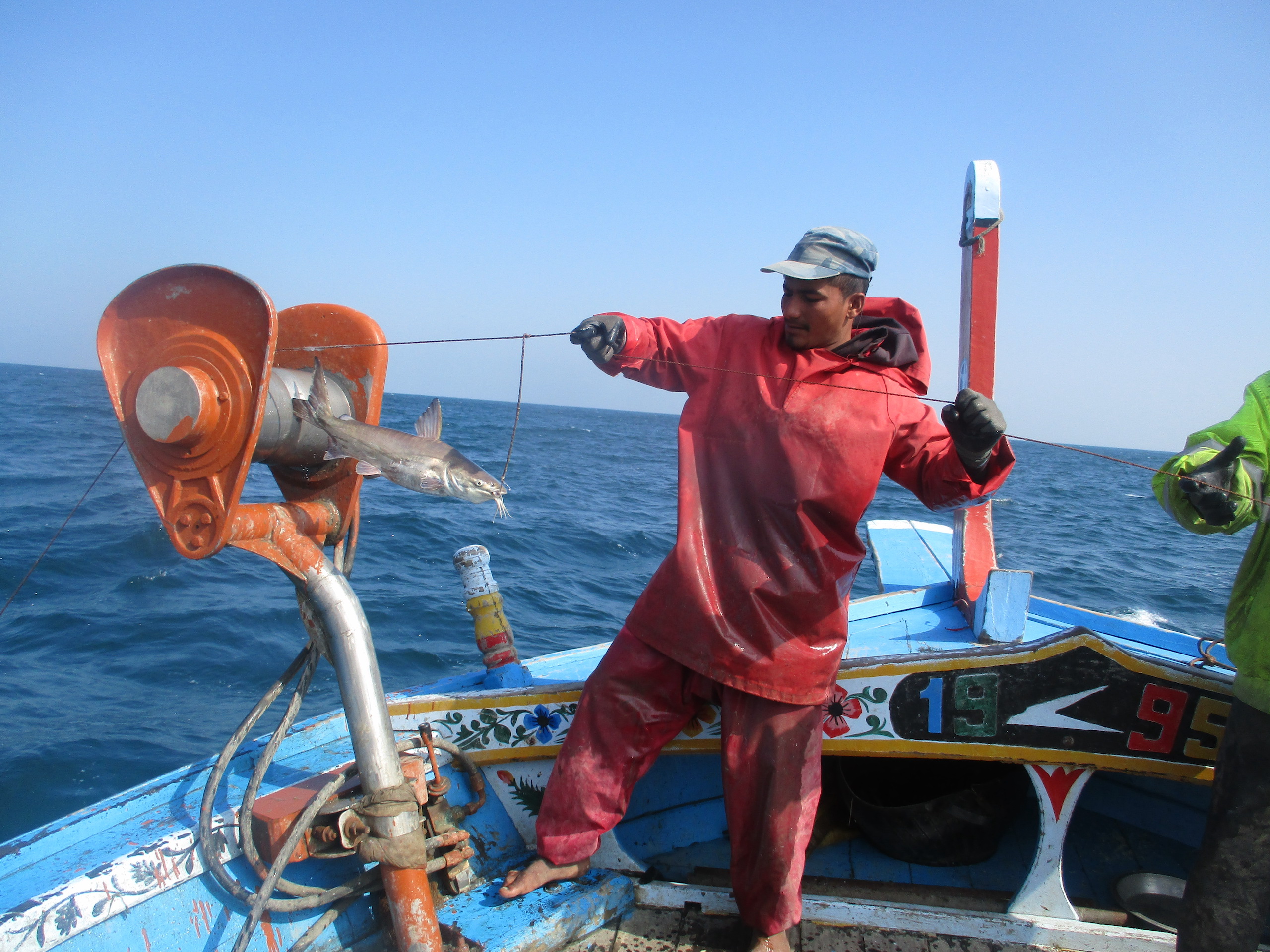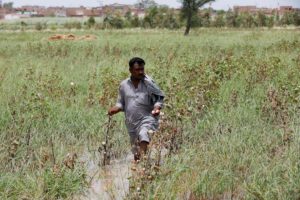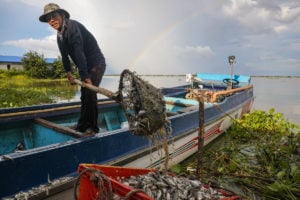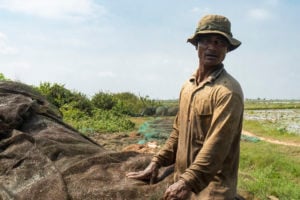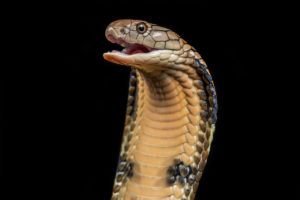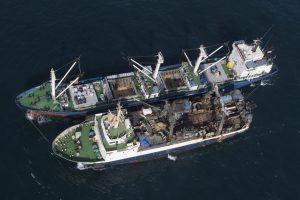Shakil’s eyes light up as he remembers rescuing an endangered green turtle in early January 2023.
“We had set up a fishing net and were anxiously waiting for the catch,” says the fisher, whose boat had travelled far out into the Arabian Sea that morning. “We suddenly felt something moving and pulling the net away from the boat. It was a huge green turtle struggling to escape.”
“By slowly pulling the net, we safely released this gentle giant back into [the sea]. We were so excited to see the turtle flipping back into the waters,” Shakil says.
In the past, he says, “like other fishers, I did not care for these animals”. But in 2018, Shakil participated in a workshop that he says “completely changed my mindset”. Shakil and other fishers learned about the important ecological roles played by marine animals like turtles, sharks and whales, and how their populations are dwindling. They were also taught how to safely release animals that get caught accidentally in their nets while they are fishing – often referred to as bycatch.
Shakil lives in the coastal village of Ibrahim Hyderi, in Pakistan’s biggest city Karachi. He is one of around 700 people who have received training from WWF-Pakistan under its Sustainable Fisheries Entrepreneurship Project, which has been operating in Ibrahim Hyderi and nearby village of Rehri Goth since 2016. The aims of the project, which is supported by the Engro Foundation, include reducing bycatch and creating additional livelihood opportunities to make fishing on Pakistan’s coast more sustainable.
Indiscriminate nets in Pakistan
Before 2012, about 28,000 turtles and 12,000 dolphins would be caught every year in fishing gear in Pakistan’s waters, says Muhammad Moazzam Khan, WWF-Pakistan’s technical adviser for marine fisheries. He adds that nearly all entangled dolphins would die due to suffocation.
Khan tells The Third Pole that around 21,000 fishing boats operate in coastal Pakistan – 13,000 in Sindh province and 8,000 in Balochistan. Most use gillnets, seine nets and trawling – methods that trap marine animals indiscriminately and lead to high quantities of bycatch.
Gillnets are a particular problem for Pakistan’s marine ecosystems. They create impenetrable walls of fine-meshed netting across large areas of the sea, which often entangle large marine animals and juvenile fish alongside the targeted fish species.
UN regulations and agreements under the Indian Ocean Tuna Commission, an intergovernmental organisation of which Pakistan is a member, stipulate that drift gillnets should not be more than 2.5 kilometres long. Despite this, “our fishers use nets that are 15 to 20 kilometres”, says Shoaib Kiani, assistant professor at the University of Karachi’s Institute of Marine Science, stressing that the regulations need to be upheld. Kiani says that fish populations in Pakistan’s waters have fallen by 40-70%, referring to a study that assessed bycatch in the country’s gillnet fisheries between 2012 and 2015.
In response, WWF-Pakistan started a ‘crew-based observer programme’ across coastal Pakistan in 2012. Khan says this initiative has educated 100 skippers on the safe release of endangered marine species, motivating fishers with public recognition and awards. In the past 11 years, he says, 113 whale sharks, 42 sunfish, seven dolphins, five whales, seven sharks, 96 mobulids (manta and devil rays), 34 sea snakes, 21 giant squid and thousands of marine turtles have been released from nets in Pakistan’s waters.
Adoption of more sustainable fishing practices
“We later realised that a rescue and safe release programme is not enough,” says Khan. WWF-Pakistan therefore started work on changing the fishing gear being used. “Integrating local wisdom and using scientific information, we experimented with sub-surface gillnets [where nets are set more than two metres below the surface] in 2015. This was very productive, as the bycatch of cetaceans [whales, dolphins and porpoises] was reduced by 98%.”
Between 2016 and 2019, all 700 boats in Pakistan that fish for tuna switched to using these sub-surface gillnets. “This technique is also followed by some fishers in Iran, Oman and India,” Khan adds.
Then, in 2018, modified longline gear was introduced, says Nadeem Shaikh, senior officer for community development at WWF-Pakistan. Instead of a large net, this method uses a single fishing line, along which are hung as many as 4,000 baited hooks.
Traditional longline fishing, which was used before the adoption of gillnets, had high rates of bycatch. Turtles were particularly prone to encountering the lines, as they were set near the sea surface, and swallowing the J-shaped baited hooks. The WWF project provides fishers with ‘circle’ hooks, which are far less likely to be swallowed, to use alongside J-shaped hooks. It urges fishers to use bait which is less likely to attract non-target species, and trains them to set the lines deeper, at over 70 metres, in fishing grounds where turtles and sharks are less likely to encounter them.
Shaikh says that according to WWF-Pakistan data for 2018-22, 12 boats that were using the new equipment and practices caught only six turtles in their longlines, and that these were safely released by trained fishers. No incidents of whales, whale sharks or dolphins being entangled have been reported.
Kiani, the University of Karachi professor, describes longline fishing and sub-surface gillnets as “suitable fishing practices”, stating that entanglement of threatened and endangered species has been significantly reduced where the WWF-Pakistan measures have been adopted. He stresses that there is still a need to raise awareness among fishers, and for the government to regulate fishing practices.
What do these methods mean for Pakistan’s fishers?
While fisheries contribute less than 1% of Pakistan’s GDP, they provide jobs for up to 1.8 million people.
WWF-Pakistan’s Shaikh grew up in a marginalised fishing community, where he says poverty and difficulties accessing basic amenities are still common. He says that longline fishing is an important way to raise fishers’ incomes.
Muhammad Ali is one of three fishers from Ibrahim Hyderi who had longline fishing installed on their boats in 2018, through WWF-Pakistan’s Sustainable Fisheries Entrepreneurship Project. He tells The Third Pole this has changed his life, with his income more than trebling. In the past, he says, he earned about 600,000 Pakistan rupees (about USD 2,300) a year, but now can earn up to PKR 2,000,000 (USD 7,600) in a year. Longline fishing in deep waters has allowed him to catch larger fish in greater quantities, which he can sell at a good rate.
The increasing adoption of more efficient fishing practices leads to the question of whether this could deplete the target fish populations.
Nadeem Shaikh from WWF-Pakistan says that the data shows the longline method catches fish including daggertooth pike conger, javelin grunter, John’s snapper, orange-spotted grouper, spotted catfish, spangled emperor and tigertooth croaker. While the IUCN Red List lists some of these populations as decreasing, all are ranked as being of Least Concern.
Shaikh describes longline gear as the “most effective”, as a small number of large fish are caught, rather than a large number of small fish (as in gillnet fishing), putting “minimum pressure” on fish stocks.
Shaikh says it costs around PKR 900,000 (USD 3,400) to install longline equipment on a boat, with WWF-Pakistan contributing half of the cost. In the past two years, another 15 boats have been fitted with longline gear. Others have made the switch independently, and 65 boats in Ibrahim Hyderi and Rehri Goth in Karachi now use longlines, changing the lives of around 980 fishers.
According to Shaikh’s calculations, these 980 fishers earn almost three times more than their counterparts still using gillnets.
So far, only about 4% of Pakistan’s fishing fleet has moved to one of the more sustainable methods. Shaikh says that it may not be possible to shift all fishing vessels to longline and sub-surface gillnets, as fishing vessels are involved in different types of fisheries and the equipment they use depends on the fish they target. “However,” he says, “we are working closely with government departments and making efforts to sensitise fishers to adopt sustainable fishing practices. The change in the gear or modifications in existing practices also requires some funding for which we have engaged the corporate sector to support these conservation initiatives.”
Marine scientist Kiani is hopeful that “with provision of proper fishing gear, education, and capacity-building programmes for fishers, we can help revive the dwindling populations of marine species, of which some are on the verge of extinction”.
